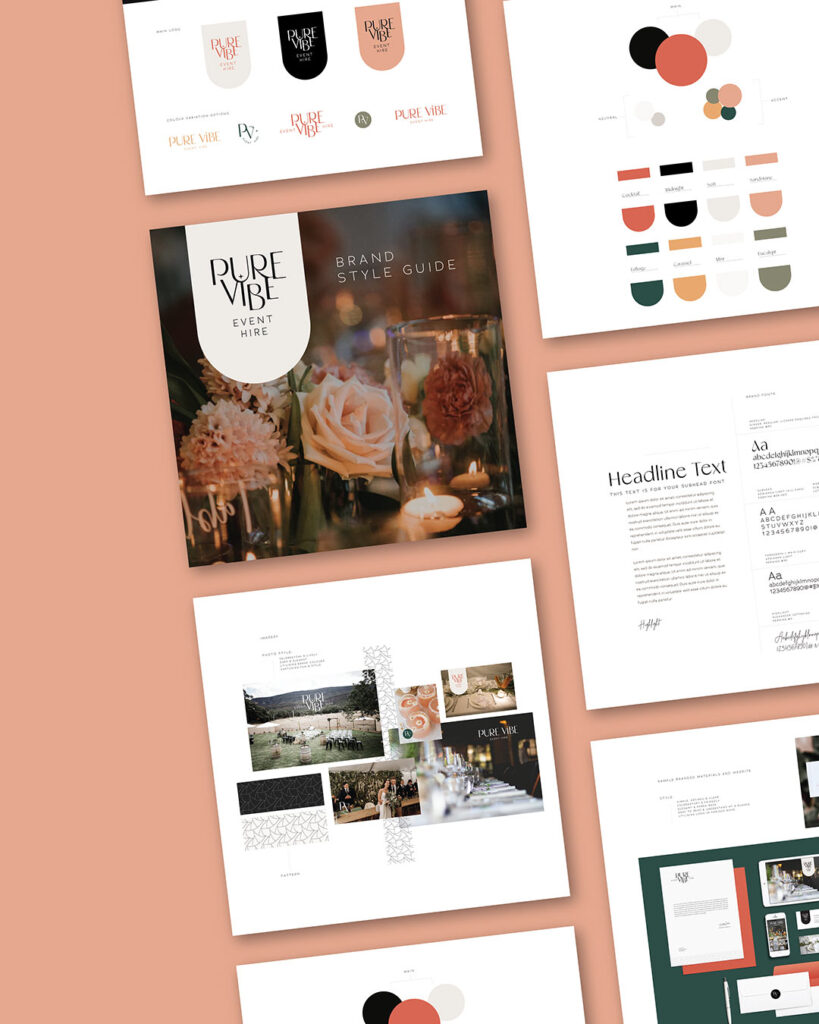Developing your own brand story
Your brand story is a powerful, foundational tool in your business journey. It’s what makes your business memorable and endearing to your customers. But there is a lot of confusion about what a brand story is, and how to write your own. Let me demystify it for you.
First, here’s my two cents: I think there is incredible value for business owners to write their own brand story. It is a strengthening and empowering process. No, you don’t have to share it publicly if you don’t want to. It can just be a personal statement, underlying your brand and informing your visuals and messaging. My own brand story I choose not to share; I have it in my studio and touch base with it every so often to let it fuel me and keep me in my lane.
When I do Brand Strategy with clients, we delve into A LOT and develop the values, aspirations, emotions, tone and key words to use in messaging, etc. But I don’t sit down with them and write out their brand story as it needs to come from you. I want to suggest that you follow the tips below to write your own brand story, then take it to a copywriter to fine-tune before including it on your website or marketing.

So, What Is a Brand Story?
At its essence, a brand story is the narrative (both verbal and visual) that defines your business beyond just its products or services. It’s the emotional and human element of your brand that connects with your audience on a deeper level. Think of it as the heart and soul of your business, conveying its purpose, values, and personality.
And, controversial as it may be, I also don’t believe you NEED a brand story in paragraph form. What you DO need is to know your WHY (your business heart), to reflect and take time to understand your business’ key values, uniqueness, what it gives and represents to people and how it can connect. It certainly can be written as a few paragraphs, but it can also be a list, a series of bullet points, or even consolidated within your mission statement. If writing is intimidating for you, start with lists or columns.
The most important thing is to understand and convey is the purpose/heart and vision of your business, key brand values and your personality (that’s where I come in a branding designer and where a copywriter comes in with tone of voice).

Why Is a Brand Story Important? In short…
- Memorability: People remember stories way better than facts or stats. Your brand story can make your business more memorable and shareable. You may even get a bit of a fan club, which helps spread your message.
- Emotional Connection: A well-crafted brand story evokes those ever-powerful emotions (it may even pull a heart-string or two) and helps customers relate to your business on a personal level. This connection can foster loyalty and trust. Which, yes, equates to sales and followers. (check out my blog post on Emotional Branding for more on this)
- Differentiation: In a crowded (not to mention fast) marketplace, your brand story sets you apart from competitors. It shows what makes your business unique and why customers should choose (beautifully unique) you.
Now, let’s create your own brand story:
1. Discover Your Purpose:
- Start by unwrapping your WHY: Start by asking yourself why your business exists. What inspired you to start it? What problem or need were you passionate about addressing in your industry or community? Your “why” often forms the core of your brand story. Watch Simon Sinek’s short TED talk on this here

2. Identify Your Values:
- Define Your Brand Values: Identify the main values that guide your business. Are you committed to sustainability, customer empowerment, innovation, or social responsibility? Your values shape your brand’s character and should align with your story. I think it is important to limit these to your top 4 or 5 max to really get to the core. Touch back to your values regularly, ensuring all of your messaging and marketing uses these as pillars. Your entire team and staff should know these too.
3. Know Your Audience:
- Audience Research: Conduct thorough research to understand your target audience. What are their demographics, interests, and pain points? Knowing your audience helps you tailor your brand story to resonate with them.
- Customer Personas: Create a customer persona to humanise your audience. Give them a name, background, and specific challenges. This makes it easier to craft a story that addresses their needs. Close your eyes, imagine your dream customer/client. They may be made up or someone specific. Define them in as much detail as possible. I believe it is important to understand psychographics as well as demographics.
4. Find Your Unique Angle:
- Origin Story: Share the story of how your business began. What inspired you to start it? Are there any challenges or breakthroughs you faced in the early days can be compelling elements of your narrative.
- Unique Proposition: Highlight what sets your business apart from competitors. It could be a special process, a unique product feature, or an exceptional customer experience. Emphasise this uniqueness in your brand story. Touch back to your why and don’t be afraid to really dig deep into the feelings here. We make purchasing decisions from our feelings, not our logic!
5. Craft a Narrative:
As I mentioned, I don’t believe that you need to necessarily write your brand story in paragraph form, but if this resonates with you and your customers, this format works well:
- Beginning: Start with the origin or the problem you aimed to solve. Paint a picture of the circumstances that led to your business’s creation. This is where you set the stage.
- Middle: Describe how your business has evolved. Share key milestones, challenges, and successes. Showcase your journey and growth as a business.
- End: Look to the future. What are your aspirations and goals? How do you envision your business making a positive impact on your customers and the world? End your story with a vision of what’s to come.
6. Make it Relatable:
- Language and Tone: Use language that resonates with your target audience. Consider their preferences and communication style. Your tone can be friendly, professional, or even humorous, depending on your brand’s personality. I like to first make a list of emotions that we want our customers to feel (for example, empowerment). Next, I list words that talk about the tone that we want to speak from (for example, guidance). Last, make a list of some specific words that you can consistently use in your messaging to evoke this (ie. powerful, streamlined or expert). Make sure to be consistent with your tone and language.
7. Visualize Your Story:
- Branding Design: You didn’t think we’d skip this, did you? 😉 Your visual branding design, such as logo, colours, fonts, textures and imagery should align with your brand story and be consistent with the narrative you’re crafting. They should evoke the same emotions and reinforce the narrative. They play a massive part, because it is with our eyes that we often first encounter a brand. The visual branding should do the talking for us, telling the essence of our story first. That’s why it’s so important to nail the branding from word go.

8. Share Authentically:
- Honesty and Transparency: Be authentic in your storytelling. Share both successes and challenges. Authenticity builds trust and authenticity in your audience.
9. Consistency is Key:
- Consistency builds brand trust: Integrate your brand story and visual branding design into every aspect of your business. From marketing materials and social media to customer interactions and employee training, your narrative should be consistently reflected. When customers see branding and voice used consistently, it lets them feel they know you, but also that they can trust who you say you are. Building customer trust equates to sales. We never buy from a place of distrust.
10. Evolve Over Time:
- Adapt and Grow! Your brand story can evolve as your business grows and changes. Keep it updated to reflect new milestones, goals, and shifts in your industry or customer preferences.
Creating a brand story is a creative and strategic process that takes time and reflection. It’s not just about storytelling; it’s about crafting a narrative that resonates with your audience, aligns with your values, and differentiates your business in a meaningful way. A well-crafted brand story will not only attract customers but also create a lasting connection that goes beyond transactions.
So, take your time, be thoughtful, and let your brand story glow as the heart and soul of your business. Would you like to dive deeper into your brand strategy and story? I love working with clients at all stages of business to craft their brand strategy with a guided workshop and development process. And of course, if you need visual branding packages, I’d love to chat! Just follow the links to work with me! ✨

Leave a Comment